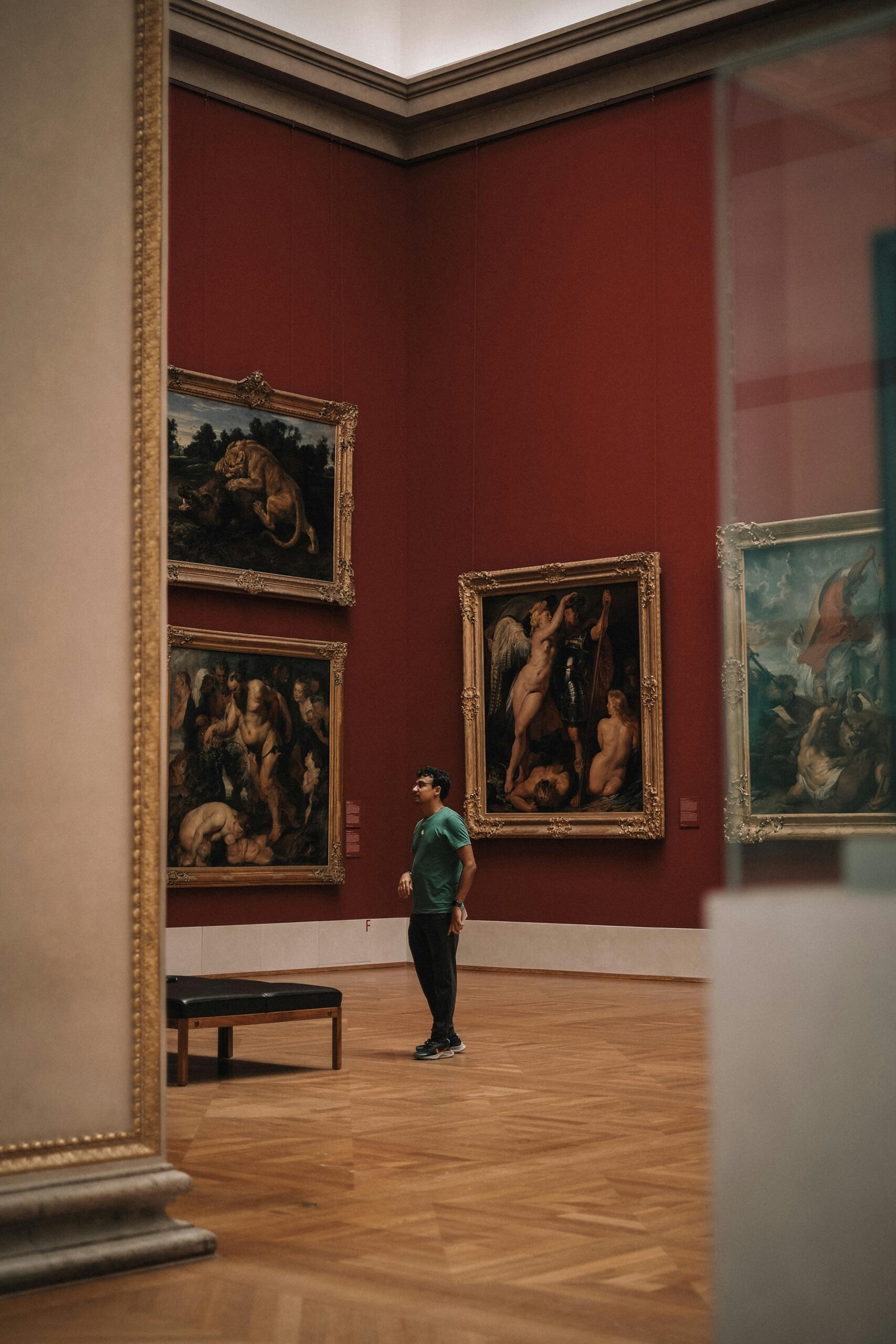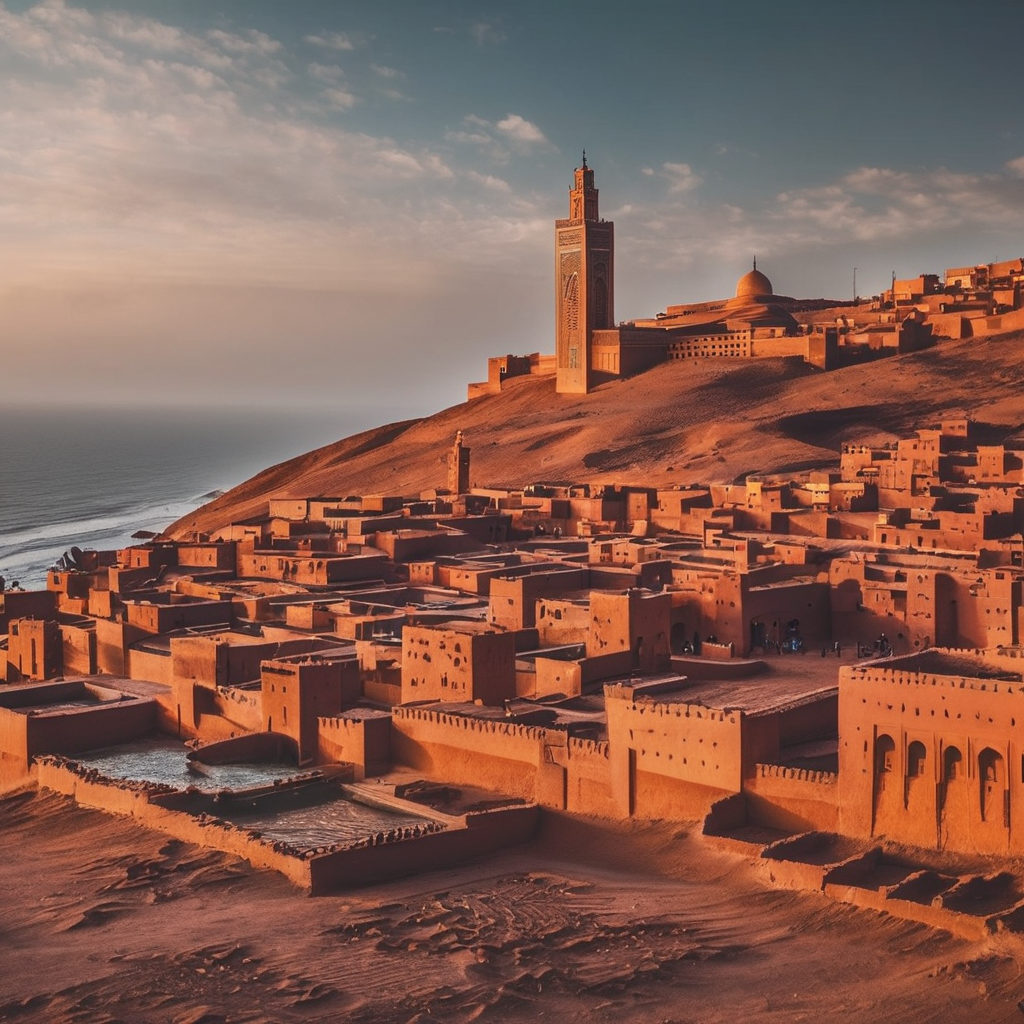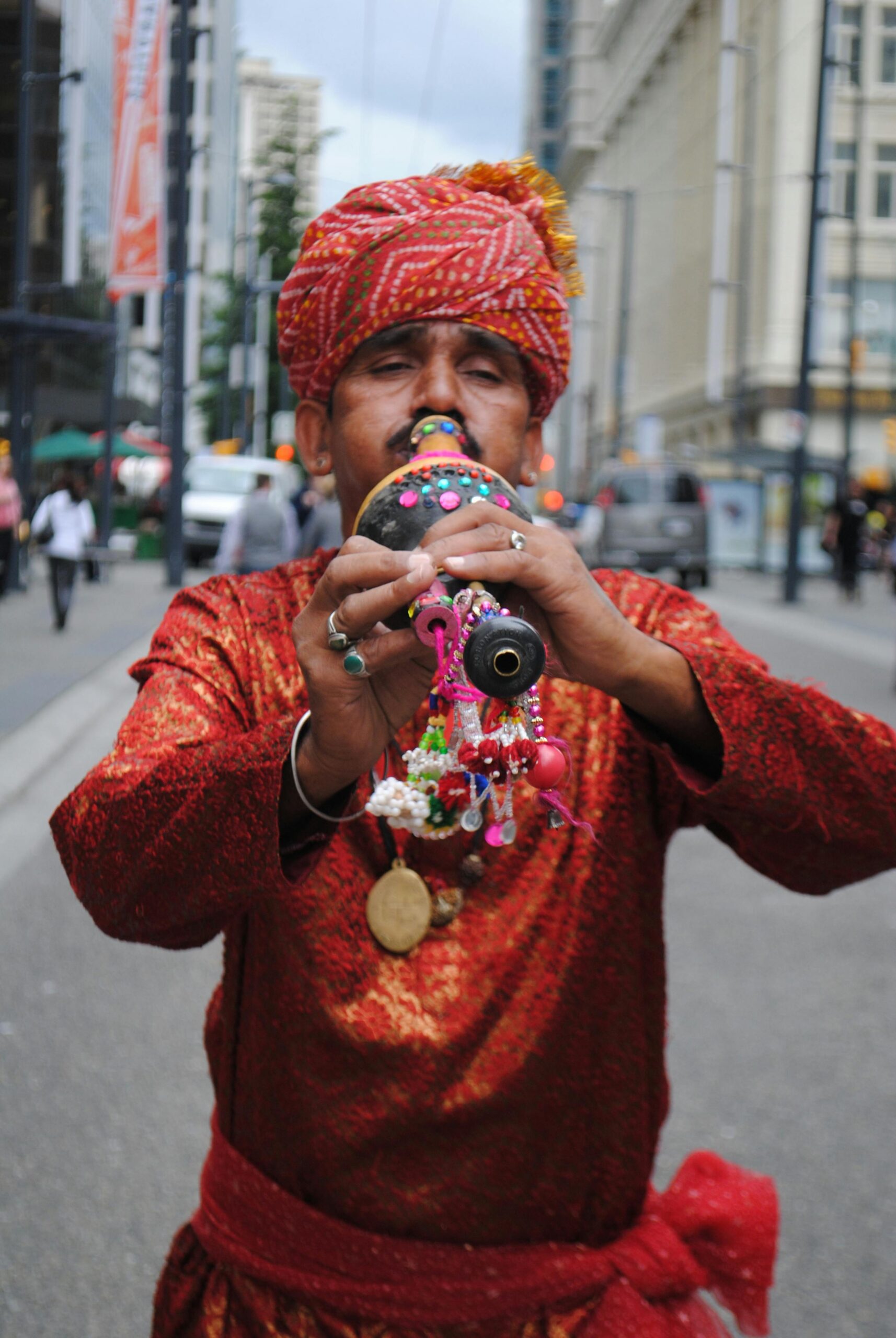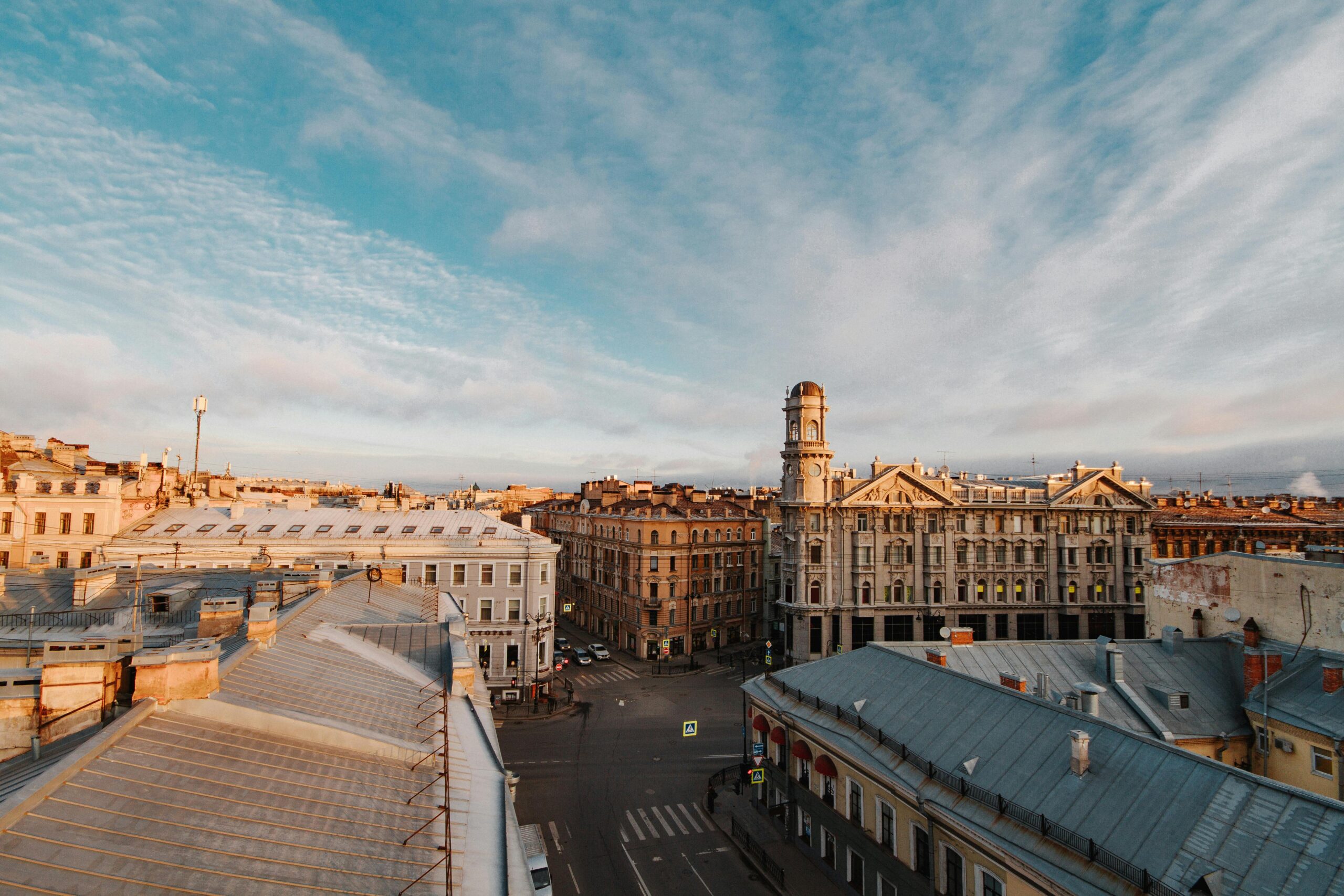In the realm of travel, there exists an ever-enticing fusion of exploration and cultural immersion. Among the myriad delights awaiting travelers, few experiences rival the enchantment of wandering through the hallowed halls of museums and galleries. These institutions not only house treasures of artistic expression but also serve as windows into the heart and soul of diverse civilizations.
In this article, we embark on a journey across continents, uncovering the most captivating museums and galleries that beckon the culturally curious traveler. From the storied Louvre in Paris to the avant-garde wonders of Tokyo’s National Museum, join us as we traverse the globe in pursuit of art, history, and inspiration.
The Louvre, Paris, France
The Louvre Museum, located in the heart of Paris, France, stands as one of the most iconic and celebrated museums globally. Boasting a rich history spanning over eight centuries, the Louvre is not only a testament to the evolution of art but also a reflection of the cultural heritage of France. Originally built as a fortress in the late 12th century, the Louvre transformed into a royal palace before eventually becoming a museum during the French Revolution.
Home to over 35,000 works of art, the Louvre offers visitors an unparalleled journey through time and artistic expression. From ancient Egyptian artifacts to Renaissance masterpieces, the museum’s vast collection encompasses diverse cultures and periods, making it a must-visit destination for art enthusiasts worldwide. Perhaps its most famous resident, the Mona Lisa by Leonardo da Vinci, continues to captivate audiences with its enigmatic smile.
Apart from its impressive collection, the Louvre’s architectural grandeur is itself a sight to behold. The glass pyramid entrance, designed by architect I.M. Pei, serves as a modern contrast to the museum’s historic facade, symbolizing the intersection of tradition and innovation.
Visitors to the Louvre can explore its extensive galleries, each offering a unique glimpse into art and history. Whether wandering through the ancient Egyptian wing or admiring classical sculptures in the Greek and Roman galleries, there is something to fascinate every visitor.
In addition to its permanent collection, the Louvre also hosts temporary exhibitions, providing fresh perspectives on art and culture. From retrospectives of renowned artists to thematic showcases, these exhibitions ensure that each visit to the museum offers a new and enriching experience.
With its unparalleled collection, architectural splendor, and rich history, the Louvre Museum continues to inspire and enchant visitors from around the globe, reaffirming its status as a cultural beacon of France and the world.
The British Museum, London, UK
Nestled in the heart of London, the British Museum stands as a testament to human civilization’s rich tapestry, housing a vast collection of art and artifacts spanning over two million years of history. Founded in 1753, the museum’s founding ethos of accessibility and enlightenment continues to guide its mission of sharing knowledge and cultural heritage with the world.
Home to some of the most significant cultural treasures from across the globe, the British Museum offers visitors a journey through time and geography. From ancient Egyptian mummies to the Rosetta Stone, the Parthenon sculptures to the Elgin Marbles, the museum’s collection is a testament to the diversity and ingenuity of human creativity.
The British Museum’s expansive galleries are organized thematically, allowing visitors to explore different cultures, civilizations, and artistic movements. Whether delving into the mysteries of ancient Mesopotamia or marveling at the intricate craftsmanship of Chinese porcelain, each gallery offers a window into the past and present of humanity.
In addition to its permanent collection, the British Museum hosts a diverse range of temporary exhibitions, showcasing everything from contemporary art to archaeological discoveries. These exhibitions provide visitors with fresh perspectives and insights into various aspects of global culture and history.
Beyond its role as a repository of artifacts, the British Museum serves as a center for research and education, fostering dialogue and collaboration among scholars, students, and the public. Through lectures, workshops, and educational programs, the museum strives to engage audiences of all ages and backgrounds, ensuring that its collections remain relevant and accessible to future generations.
As a symbol of cultural exchange and understanding, the British Museum continues to inspire and educate millions of visitors each year, bridging the gap between past and present, local and global, and enriching our understanding of the world and ourselves.
Uffizi Gallery, Florence, Italy
Located in the heart of Florence, Italy, the Uffizi Gallery stands as a testament to the city’s rich artistic heritage and Renaissance legacy. Originally designed by architect Giorgio Vasari in the 16th century as administrative offices for the Florentine magistrates (hence the name “Uffizi,” meaning “offices” in Italian), the building was later transformed into a museum to house the extensive art collection of the ruling Medici family.
Today, the Uffizi Gallery is renowned for its unparalleled collection of Renaissance art, including works by some of the era’s most celebrated artists, such as Michelangelo, Leonardo da Vinci, Raphael, and Botticelli. From the iconic Birth of Venus to the majestic Medici Venus, the museum’s collection offers visitors a comprehensive overview of the period’s artistic achievements.
The Uffizi Gallery’s layout is structured chronologically, allowing visitors to trace the evolution of Renaissance art and its various themes and styles. From the early experiments of Giotto to the high Renaissance ideals of Leonardo and Michelangelo, each room offers a glimpse into the artistic genius of the period.
In addition to its Renaissance treasures, the Uffizi Gallery also houses a significant collection of classical antiquities, including Roman sculptures and ancient artifacts. These pieces provide context for the development of Renaissance art and highlight the influence of classical aesthetics on Renaissance artists.
Beyond its artistic significance, the Uffizi Gallery’s architectural splendor adds to its allure. The museum’s corridors and galleries are adorned with frescoes and sculptures, reflecting the grandeur and sophistication of Renaissance Florence.
With its rich collection, historical significance, and architectural beauty, the Uffizi Gallery continues to captivate visitors from around the world, offering a glimpse into the artistic and cultural legacy of one of Italy’s most vibrant cities.
The Metropolitan Museum of Art, New York City, USA
Nestled amidst the bustling streets of New York City, the Metropolitan Museum of Art stands as a cultural beacon, showcasing a diverse array of art spanning over 5,000 years of human history. Founded in 1870, the Met, as it is affectionately known, has grown into one of the largest and most comprehensive art museums in the world, attracting millions of visitors each year.
The Met’s vast collection encompasses a wide range of artistic disciplines, from ancient Egyptian artifacts to contemporary masterpieces. Visitors can explore galleries dedicated to European paintings, Asian sculpture, Islamic art, and much more, providing a global perspective on art and culture.
One of the Met’s most iconic features is its collection of American art, which spans from colonial times to the present day. From the portraits of Gilbert Stuart to the modernist works of Jackson Pollock, the museum’s American Wing offers a comprehensive overview of the nation’s artistic heritage.
In addition to its permanent collection, the Met hosts a rotating series of special exhibitions, featuring everything from ancient civilizations to contemporary art movements. These exhibitions provide visitors with fresh insights and perspectives, ensuring that each visit to the museum offers a new and enriching experience.
Beyond its role as a cultural institution, the Met also serves as a center for education and research, offering a wide range of programs and resources for scholars, students, and the public. From lectures and workshops to digital initiatives and educational outreach, the museum strives to foster an appreciation for art and culture among diverse audiences.
With its rich history, diverse collection, and commitment to education and outreach, the Metropolitan Museum of Art remains a cornerstone of New York City’s cultural landscape, inspiring and enriching millions of visitors each year.
The Art Institute of Chicago, Illinois, USA
Located in the heart of downtown Chicago, the Art Institute stands as a testament to the city’s vibrant cultural scene, housing a world-renowned collection of art spanning centuries and continents. Founded in 1879, the museum has grown from its modest beginnings into one of the oldest and largest art museums in the United States.
The Art Institute’s collection is vast and diverse, encompassing over 300,000 works of art ranging from ancient artifacts to contemporary installations. Highlights include iconic paintings such as Grant Wood’s “American Gothic” and Georges Seurat’s “A Sunday on La Grande Jatte,” as well as extensive collections of European and American decorative arts, textiles, and photography.
One of the Art Institute’s most beloved features is its collection of Impressionist and Post-Impressionist masterpieces, which includes works by Claude Monet, Vincent van Gogh, and Pierre-Auguste Renoir. The museum’s galleries offer visitors a chance to immerse themselves in the revolutionary styles and techniques of these groundbreaking artists.
In addition to its permanent collection, the Art Institute hosts a dynamic roster of special exhibitions, showcasing everything from contemporary art to ancient artifacts. These exhibitions provide visitors with opportunities to engage with new ideas and perspectives, further enriching their museum experience.
Beyond its role as a museum, the Art Institute is also a hub of education and research, offering a wide range of programs and resources for scholars, students, and the public. From lectures and workshops to interactive tours and digital initiatives, the museum strives to make art accessible and engaging for all.
With its world-class collection, innovative programming, and commitment to accessibility, the Art Institute of Chicago continues to inspire and enrich the lives of visitors from around the world, reaffirming its status as a cultural treasure of the Midwest.
The Getty Center, Los Angeles, USA
Perched atop a hill overlooking the sprawling metropolis of Los Angeles, the Getty Center stands as a beacon of art, architecture, and culture. Designed by renowned architect Richard Meier, the museum’s striking travertine facade houses a world-class collection of European paintings, sculptures, decorative arts, and photography.
The Getty Center’s collection spans from the Middle Ages to the present day, showcasing masterpieces by artists such as Rembrandt, Van Gogh, and Monet. Visitors can wander through the museum’s galleries, exploring diverse artistic movements and styles, from the Italian Renaissance to French Impressionism.
One of the Getty Center’s most distinctive features is its expansive gardens, which offer stunning views of the surrounding landscape and serve as outdoor galleries showcasing sculptures and plantings inspired by classical antiquity. The gardens provide visitors with a tranquil oasis amidst the hustle and bustle of urban life, inviting contemplation and reflection.
In addition to its permanent collection, the Getty Center hosts a rotating series of special exhibitions, highlighting specific artists, periods, or themes in art history. These exhibitions provide visitors with opportunities to delve deeper into particular aspects of the museum’s collection, offering fresh insights and perspectives.
Beyond its role as a museum, the Getty Center is also a center for research and education, offering a wide range of programs and resources for scholars, students, and the public. From lectures and symposia to artist residencies and educational initiatives, the museum strives to foster a deeper understanding and appreciation of art and culture.
With its stunning architecture, world-class collection, and commitment to education and research, the Getty Center continues to captivate and inspire visitors from around the world, reaffirming its status as a cultural jewel of Los Angeles.
The National Museum of China, Beijing, China
Situated at the heart of Beijing, the National Museum of China stands as a testament to the country’s rich cultural heritage and historical legacy. Established in 2003 through the merger of the former National Museum of Chinese History and the National Museum of Chinese Revolution, the museum boasts a vast collection spanning over 1.3 million artifacts, making it one of the largest museums in the world.
The museum’s exhibitions cover a wide range of topics, from ancient Chinese civilization to modern history and culture. Visitors can explore galleries dedicated to Chinese art, calligraphy, ceramics, jade, and more, providing a comprehensive overview of the nation’s artistic and cultural achievements.
One of the museum’s most prized possessions is the “Emperor’s Road” exhibition, which traces the history of China’s imperial dynasties through a dazzling display of artifacts, including ceremonial robes, imperial seals, and exquisite treasures from the Forbidden City. The exhibition offers visitors a glimpse into the splendor and grandeur of China’s imperial past.
In addition to its permanent collection, the National Museum of China hosts a rotating series of special exhibitions, showcasing everything from contemporary art to archaeological discoveries. These exhibitions provide visitors with opportunities to delve deeper into specific aspects of Chinese culture and history, offering fresh insights and perspectives.
Beyond its role as a museum, the National Museum of China is also a center for research and education, offering a wide range of programs and resources for scholars, students, and the public. From lectures and workshops to educational outreach initiatives, the museum strives to promote a deeper understanding and appreciation of Chinese culture and history.
With its vast collection, diverse exhibitions, and commitment to education and research, the National Museum of China continues to attract visitors from around the world, serving as a cultural ambassador for the nation and a window into China’s past, present, and future.
The Tokyo National Museum, Tokyo, Japan
Nestled amidst the vibrant streets of Tokyo, the Tokyo National Museum stands as a guardian of Japan’s artistic and cultural heritage, showcasing a diverse array of artifacts spanning millennia. Founded in 1872, the museum is the oldest and largest of its kind in Japan, offering visitors a comprehensive overview of the nation’s artistic traditions and historical legacy.
The museum’s collection encompasses a wide range of artistic disciplines, including Japanese painting, sculpture, ceramics, textiles, and decorative arts. Visitors can explore galleries dedicated to ancient Japanese artifacts, Buddhist art, samurai armor, and much more, providing a glimpse into Japan’s rich and varied cultural landscape.
One of the museum’s most renowned features is its collection of ukiyo-e woodblock prints, which includes works by masters such as Hokusai and Hiroshige. These prints offer a vivid portrayal of life in Edo-period Japan, capturing the beauty, drama, and everyday moments of Japanese society.
In addition to its permanent collection, the Tokyo National Museum hosts a rotating series of special exhibitions, showcasing everything from contemporary art to traditional crafts. These exhibitions provide visitors with opportunities to engage with new ideas and perspectives, further enriching their understanding of Japanese culture and history.
Beyond its role as a museum, the Tokyo National Museum is also a center for research and education, offering a wide range of programs and resources for scholars, students, and the public. From lectures and workshops to guided tours and educational outreach initiatives, the museum strives to foster a deeper appreciation for Japanese art and culture.
With its rich collection, dynamic exhibitions, and commitment to education and research, the Tokyo National Museum continues to serve as a cultural hub for Tokyo residents and visitors alike, preserving Japan’s artistic heritage and inspiring future generations.
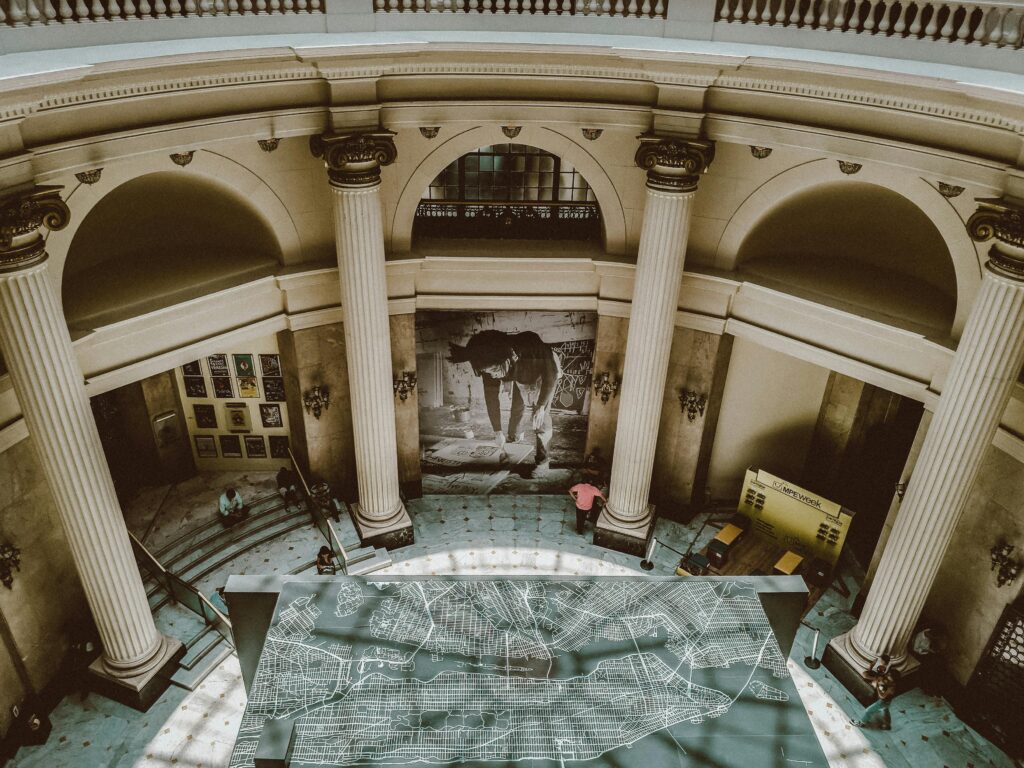
The National Gallery Singapore, Singapore
Located in the heart of Singapore, the National Gallery stands as a celebration of Southeast Asian art and culture, housed within two of the city-state’s most iconic historic buildings, the former Supreme Court and City Hall. Opened in 2015, the museum is the result of a transformative renovation and restoration project, which transformed the colonial-era structures into a modern cultural institution.
The National Gallery’s collection focuses primarily on art from Singapore, Southeast Asia, and the broader region, spanning from the 19th century to the present day. Visitors can explore galleries dedicated to Singaporean art, Southeast Asian modernism, and contemporary art, offering a diverse and dynamic overview of the region’s artistic achievements.
One of the museum’s most notable features is its collection of works by renowned Singaporean artists such as Georgette Chen, Liu Kang, and Chen Wen Hsi. These artists played pivotal roles in shaping Singapore’s artistic landscape, contributing to the development of modern art in Southeast Asia.
In addition to its permanent collection, the National Gallery Singapore hosts a vibrant program of special exhibitions, showcasing everything from historical retrospectives to cutting-edge contemporary art. These exhibitions provide visitors with opportunities to engage with new ideas and perspectives, further enriching their understanding of Southeast Asian art and culture.
Beyond its role as a museum, the National Gallery Singapore is also a center for education and outreach, offering a wide range of programs and resources for students, families, and the public. From guided tours and workshops to educational initiatives and community events, the museum strives to foster a greater appreciation for art and culture among diverse audiences.
With its stunning architecture, diverse collection, and commitment to education and outreach, the National Gallery Singapore continues to serve as a cultural beacon for Singapore and the region, celebrating the richness and diversity of Southeast Asian art and culture.
Museo Nacional de Antropología, Mexico City, Mexico
Located in the heart of Mexico City, the Museo Nacional de Antropología (National Museum of Anthropology) stands as a testament to the rich cultural heritage of Mexico’s indigenous peoples. Established in 1964, the museum is one of the largest and most visited anthropological museums in the world, attracting millions of visitors each year.
The museum’s collection encompasses artifacts and artworks from pre-Columbian civilizations, including the Maya, Aztec, Olmec, and Toltec cultures. From monumental stone sculptures to intricate ceramics and textiles, the museum’s galleries offer a comprehensive overview of Mexico’s ancient civilizations, providing insight into their beliefs, rituals, and daily life.
One of the museum’s most iconic exhibits is the Aztec Sun Stone, also known as the “Stone of the Sun” or the “Calendar Stone,” which serves as a symbol of Mexico’s indigenous heritage. Other highlights include the colossal statue of Coatlicue, the goddess of fertility and motherhood, and the reconstructions of ancient Maya temples and tombs.
In addition to its permanent collection, the Museo Nacional de Antropología hosts temporary exhibitions and cultural events, providing visitors with opportunities to explore different aspects of Mexico’s diverse cultural heritage. From contemporary art installations to traditional dance performances, these events celebrate the richness and vibrancy of Mexican culture.
Beyond its role as a museum, the Museo Nacional de Antropología is also a center for research and education, offering a wide range of programs and resources for scholars, students, and the public. From lectures and workshops to guided tours and educational materials, the museum strives to promote a deeper understanding and appreciation of Mexico’s indigenous cultures.
With its vast collection, educational initiatives, and commitment to preserving Mexico’s cultural heritage, the Museo Nacional de Antropología continues to serve as a cultural landmark and a source of pride for the Mexican people.
Museo del Oro, Bogotá, Colombia
Situated in the heart of Bogotá, Colombia, the Museo del Oro (Gold Museum) stands as a tribute to the country’s rich indigenous cultures and their mastery of goldsmithing. Founded in 1939, the museum is home to one of the largest collections of pre-Columbian gold artifacts in the world, showcasing the craftsmanship and artistic expression of Colombia’s ancient peoples.
The museum’s collection includes over 55,000 pieces of gold and other precious metals, ranging from intricate jewelry and ceremonial objects to elaborate sculptures and figurines. Highlights include the famous golden raft of the Muisca, a masterpiece of indigenous goldwork depicting a ritual offering ceremony, and the Tairona poporo, a vessel used for holding lime during religious rituals.
In addition to its gold artifacts, the Museo del Oro also houses a significant collection of pottery, stone carvings, and textiles from Colombia’s indigenous cultures, providing visitors with a comprehensive overview of the country’s pre-Columbian heritage. Interactive exhibits and multimedia installations offer insights into the symbolism and cultural significance of these artifacts.
Beyond its role as a museum, the Museo del Oro is also a center for research and education, offering a wide range of programs and resources for scholars, students, and the public. From lectures and workshops to guided tours and educational materials, the museum strives to promote a deeper understanding and appreciation of Colombia’s indigenous cultures.
With its vast collection, educational initiatives, and commitment to preserving Colombia’s cultural heritage, the Museo del Oro continues to inspire and educate visitors from around the world, serving as a cultural ambassador for the country and a symbol of its rich artistic legacy.
Museu de Arte de São Paulo, São Paulo, Brazil
Perched atop Avenida Paulista, one of São Paulo’s most iconic thoroughfares, the Museu de Arte de São Paulo (São Paulo Museum of Art) stands as a beacon of artistic excellence and cultural innovation. Designed by architect Lina Bo Bardi and opened in 1968, the museum is renowned for its distinctive architecture and world-class collection of art.
The museum’s collection spans a wide range of artistic disciplines, including European, Brazilian, African, and Asian art, from classical antiquity to the present day. Highlights include works by masters such as Rembrandt, Velázquez, Van Gogh, and Picasso, as well as iconic pieces of Brazilian modernism by artists like Candido Portinari and Tarsila do Amaral.
One of the museum’s most famous features is its collection of European art, housed in a vast open gallery known as the “salão nobre” (noble hall). Here, visitors can admire works from the Italian Renaissance, Dutch Golden Age, and French Impressionism, among other movements, arranged in a chronological and thematic sequence.
In addition to its permanent collection, the Museu de Arte de São Paulo hosts temporary exhibitions, cultural events, and educational programs, providing visitors with opportunities to engage with new ideas and perspectives in art and culture. From contemporary art installations to film screenings and lectures, these events reflect the museum’s commitment to fostering creativity and innovation.
Beyond its role as a museum, the Museu de Arte de São Paulo is also a center for research and education, offering a wide range of programs and resources for scholars, students, and the public. From art history courses to workshops and seminars, the museum strives to promote a deeper understanding and appreciation of art among diverse audiences.
With its stunning architecture, world-class collection, and dynamic programming, the Museu de Arte de São Paulo continues to enrich the cultural life of São Paulo and inspire visitors from around the world, reaffirming its status as one of Latin America’s premier cultural institutions.
The Art Gallery of New South Wales, Sydney, Australia
Situated in the heart of Sydney, the Art Gallery of New South Wales is a cultural landmark renowned for its diverse collection of Australian and international art. Established in 1871, the museum has evolved into one of Australia’s leading art institutions, attracting visitors from around the world with its impressive array of paintings, sculptures, and decorative arts.
The gallery’s collection spans a wide range of artistic styles and periods, from classical antiquity to contemporary art. Visitors can explore galleries dedicated to Australian art, European masters, Asian art, and indigenous Australian art, providing a comprehensive overview of the country’s artistic heritage and cultural diversity.
One of the gallery’s most celebrated features is its collection of Australian impressionist paintings, which includes works by renowned artists such as Arthur Streeton, Tom Roberts, and Frederick McCubbin. These paintings capture the beauty and ruggedness of the Australian landscape, as well as the spirit of optimism and national identity that emerged during the late 19th century.
In addition to its permanent collection, the Art Gallery of New South Wales hosts a vibrant program of temporary exhibitions, showcasing everything from contemporary art to historical retrospectives. These exhibitions provide visitors with opportunities to engage with new ideas and perspectives, further enriching their understanding of art and culture.
Beyond its role as a museum, the Art Gallery of New South Wales is also a center for education and outreach, offering a wide range of programs and resources for scholars, students, and the public. From lectures and workshops to guided tours and educational materials, the gallery strives to promote a deeper appreciation for art among diverse audiences.
With its world-class collection, dynamic exhibitions, and commitment to education and outreach, the Art Gallery of New South Wales continues to serve as a cultural hub for Sydney residents and visitors alike, celebrating the richness and diversity of artistic expression.
Te Papa Tongarewa, Wellington, New Zealand
Perched on Wellington’s waterfront, Te Papa Tongarewa is New Zealand’s national museum, renowned for its engaging exhibitions and interactive displays that celebrate the country’s cultural and natural heritage. Opened in 1998, the museum has become a must-visit destination for locals and tourists alike, offering insights into New Zealand’s history, art, and environment.
Te Papa’s collection encompasses a wide range of artifacts and specimens, from Maori taonga (treasures) to contemporary art installations. Visitors can explore galleries dedicated to Maori culture, New Zealand’s colonial history, natural history, and the country’s diverse cultural identity, providing a comprehensive overview of the nation’s rich and varied heritage.
One of the museum’s most iconic features is its marae, or traditional Maori meeting house, which serves as a focal point for cultural events and ceremonies. Visitors can experience Maori culture firsthand through performances, workshops, and storytelling sessions, gaining a deeper understanding of the significance of Maori customs and traditions.
In addition to its permanent exhibitions, Te Papa Tongarewa hosts a dynamic roster of temporary exhibitions and special events, showcasing everything from contemporary art to historical artifacts. These exhibitions provide visitors with opportunities to engage with new ideas and perspectives, further enriching their understanding of New Zealand’s cultural landscape.
Beyond its role as a museum, Te Papa Tongarewa is also a center for research and education, offering a wide range of programs and resources for scholars, students, and the public. From educational workshops to online resources, the museum strives to promote a deeper appreciation for New Zealand’s cultural and natural heritage among diverse audiences.
With its engaging exhibitions, interactive displays, and commitment to education and outreach, Te Papa Tongarewa continues to inspire and educate visitors from around the world, serving as a cultural ambassador for New Zealand and a symbol of the country’s unique identity.
FAQs
Q. What are some museums and galleries worth visiting
A. There are countless museums and galleries around the world that offer enriching experiences. Here are a few worth considering:
Q. The Louvre, Paris, France
A. As one of the world’s largest and most visited museums, the Louvre is home to thousands of works of art, including the iconic Mona Lisa and Venus de Milo.
Q. The Metropolitan Museum of Art, New York City, USA
A. Commonly referred to as “The Met,” this museum boasts an extensive collection spanning over 5,000 years of art from various cultures around the globe.
Q. The British Museum, London, UK
A. With a vast collection of art and artifacts from different civilizations throughout history, the British Museum offers visitors a glimpse into the world’s cultural heritage.
Q. The Vatican Museums, Vatican City
A. Housing some of the most significant masterpieces of Renaissance art, including Michelangelo’s Sistine Chapel ceiling, the Vatican Museums are a must-visit for art enthusiasts.
Q. The Uffizi Gallery, Florence, Italy
A. Renowned for its collection of Italian Renaissance masterpieces, the Uffizi Gallery showcases works by artists such as Botticelli, Leonardo da Vinci, and Raphael.
Q. The Hermitage Museum, St. Petersburg, Russia
A. One of the largest and oldest museums in the world, the Hermitage houses a vast collection of art and cultural artifacts, including works by Rembrandt, Rubens, and Van Gogh.
Q. The National Gallery, London, UK
A. Situated in Trafalgar Square, the National Gallery features a rich collection of European paintings from the 13th to the 19th centuries, including works by Van Gogh, da Vinci, and Michelangelo.
Q. The Prado Museum, Madrid, Spain
A. Home to one of the finest collections of European art, the Prado Museum showcases works by Spanish masters such as Velázquez, Goya, and El Greco, among others.
Conclusion
As we conclude our exploration of the world’s most remarkable museums and galleries, we are reminded of the profound role these institutions play in shaping our understanding of humanity’s collective heritage. From the iconic masterpieces adorning the walls of the Louvre to the evocative contemporary exhibitions housed within the Getty Center, each encounter with art leaves an indelible imprint on our hearts and minds.
So, dear reader, as you plan your next adventure, consider weaving a tapestry of cultural discovery into your itinerary. Whether strolling through the bustling streets of Paris or meandering along the serene shores of New Zealand, be sure to pause, indulge your senses, and immerse yourself in the boundless beauty of art. For in the embrace of creativity lies the true essence of travel—an endless journey of exploration, enlightenment, and wonder.

